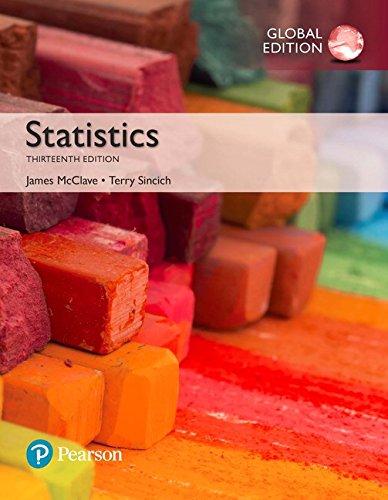Students ability in science. An article published in the American Educational Research Journal (Fall 1998) used multiple
Question:
Students’ ability in science. An article published in the American Educational Research Journal (Fall 1998) used multiple regression to model the students’ perceptions of their ability in science classes. The sample consisted of 165 Grade 5–8 students. The dependent variable of interest, the student’s perception of his or her ability (y), was measured on a four-point scale (where 1 = little or no ability and 4 = high ability). Two types of independent variables were included in the model, control variables and performance behavior variables. The control variables are: prior science attitude (measured on a 4-point scale), score on standardized science test, gender, and classroom (1, 3, 4, 5, or 6). The performance behavior variables (all measured on a numerical scale between 0 and 1) are: active-leading behavior, passive-assisting behavior, and active-manipulating behavior.
a. Identify the independent variables as quantitative or qualitative.
b. Individual b-tests on the independent variables all had p-values greater than .10 except for prior science attitute, gender, and active-leading behavior.
Which variables appear to contribute to the prediction of a student’s perception of his or her ability in science?
c. The estimated b-value for the active-leading behavior variable is .88 with a standard error of .34. Use this information to construct a 95% confidence interval for this
b. Interpret the interval.
d. The following statistics for evaluating the overall predictive power of the model were reported:
R2
= .48, F = 12.84, p 6 .001. Interpret the results.
e. Hypothesize the equation of the first-order main effects model for E(y).
f. The researchers also considered a model that included all possible interactions between the control variables and the performance behavior variables. Write the equation for this model for E(y).
g. The researchers determined that the interaction terms in the model formulated in part b were not significant;
therefore, they used the model from part a to make inferences.
Explain the best way to conduct this test for interaction. Give the null hypothesis of the test.
Based on Jovanovic, J., and King, S. S. “Boys and girls in the performance-based science classroom: Who’s doing the performing.”
American Educational Research Journal, Vol. 35, No. 3, Fall 1998, p. 489 (Table 8).
Step by Step Answer:






